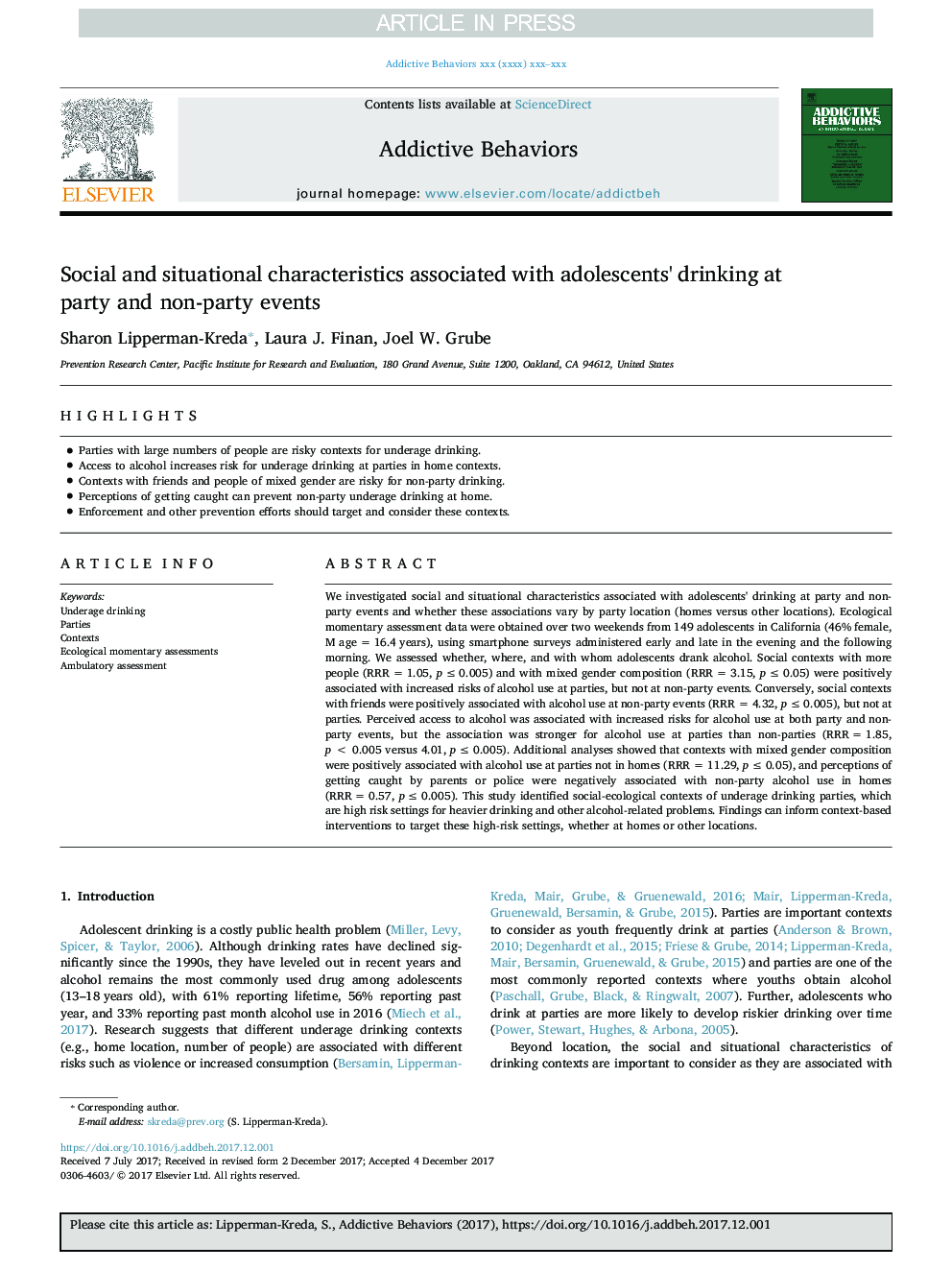| Article ID | Journal | Published Year | Pages | File Type |
|---|---|---|---|---|
| 7259120 | Addictive Behaviors | 2018 | 6 Pages |
Abstract
We investigated social and situational characteristics associated with adolescents' drinking at party and non-party events and whether these associations vary by party location (homes versus other locations). Ecological momentary assessment data were obtained over two weekends from 149 adolescents in California (46% female, M age = 16.4 years), using smartphone surveys administered early and late in the evening and the following morning. We assessed whether, where, and with whom adolescents drank alcohol. Social contexts with more people (RRR = 1.05, p â¤Â 0.005) and with mixed gender composition (RRR = 3.15, p â¤Â 0.05) were positively associated with increased risks of alcohol use at parties, but not at non-party events. Conversely, social contexts with friends were positively associated with alcohol use at non-party events (RRR = 4.32, p â¤Â 0.005), but not at parties. Perceived access to alcohol was associated with increased risks for alcohol use at both party and non-party events, but the association was stronger for alcohol use at parties than non-parties (RRR = 1.85, p < 0.005 versus 4.01, p â¤Â 0.005). Additional analyses showed that contexts with mixed gender composition were positively associated with alcohol use at parties not in homes (RRR = 11.29, p â¤Â 0.05), and perceptions of getting caught by parents or police were negatively associated with non-party alcohol use in homes (RRR = 0.57, p â¤Â 0.005). This study identified social-ecological contexts of underage drinking parties, which are high risk settings for heavier drinking and other alcohol-related problems. Findings can inform context-based interventions to target these high-risk settings, whether at homes or other locations.
Related Topics
Life Sciences
Neuroscience
Behavioral Neuroscience
Authors
Sharon Lipperman-Kreda, Laura J. Finan, Joel W. Grube,
